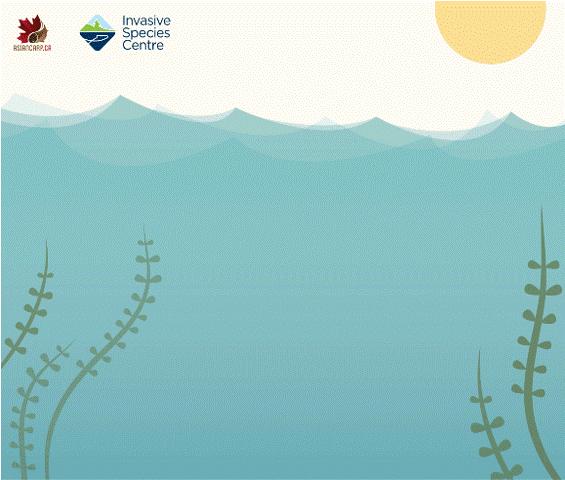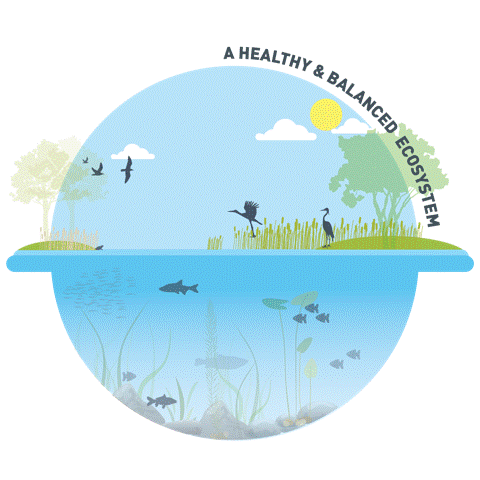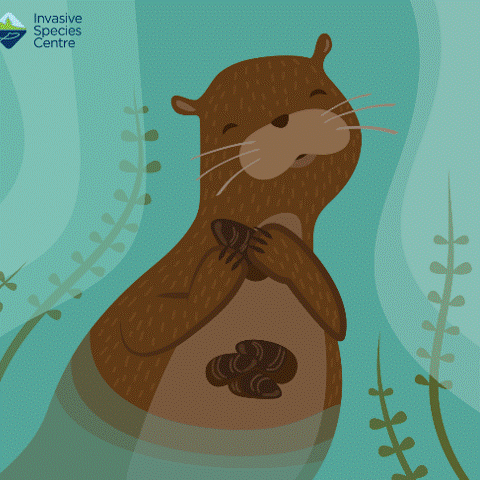The introduction of invasive Asian carps into Canadian waters poses a threat to native species and overall biodiversity.
Asian carps can alter habitat, compete with native fishes for food and habitat, and act as carriers for diseases or parasites that could spread to native fishes. Asian carps grow very large, very quickly and it is unlikely that their populations would be controlled by native predators in the Great Lakes basin, as they would quickly outgrow the gape (mouth) size of native predatory species.
While the term Asian carps refers to four species, each is different and therefore, would have their own unique impacts to the Great Lakes if they were to establish.
Bigheaded Carps (Bighead Carp + Silver Carp) Impacts
Bigheaded carps is the collective term used to refer to species in the Hypophthalmichthys genus, which includes Bighead Carp and Silver Carp. Bighead and Silver carps are planktivorous, meaning they eat plankton. As Bighead Carp consume zooplankton, and Silver Carp consume phytoplankton, the two species do not compete for food with one another. However, plankton are a very important food source for many native species, as well. At the bottom of the aquatic food web, one way or another, most species depend on plankton. Bighead and Silver carps lack a true stomach, and continuously filter large volumes of water that contain this vital food source to a greater degree than native species. In doing so, Bigheaded carps could outcompete and cause a large decrease in the population sizes of native planktivorous species, such as:
- Alewife
- Bloater
- Cisco
- Rainbow Smelt
This decline could, in turn, negatively impact predatory fishes that consume these forage fish, such as:
- Yellow Perch
- Lake Trout
- Walleye

This voracious feeding behaviour can also create conditions ideal for toxic algal blooms, by creating clearer water conditions and allowing more sunlight to penetrate the water.
Grass Carp Impacts

Grass Carp primarily consume aquatic vegetation. Grass Carp can consume up to 40% of their bodyweight daily in aquatic vegetation, but only digest half of that plant material. The rest of this undigested food is expelled back into the water and can create murky water conditions. They grow very large, very quickly – reaching over 80 lbs in weight and over 5 ft in length.
Grass Carp are a huge threat to wetlands. Wetlands are an important part of Great Lakes ecosystems and provide nursery areas for fish, support a variety of wildlife, control flooding, filter nutrients and harmful pollutants, and provide food and habitat for native fishes, birds, amphibians and reptiles. Vegetated near shore areas would be the most vulnerable habitats. Loss of nearshore vegetation could negatively impact water quality because plants along the shoreline slow surface runoff and filter contaminants before they reach the lake. It is estimated that just 10 Grass Carp per hectare can reduce wetland vegetation by up to 50%.
- Canvasback
- Common Gallinule
- Redhead
- Ring-necked Duck
- Sora
- American Coot
- Black-crowned Night Heron
- Blue-winged Teal
- Green-winged Teal
- King Rail
- Least Bittern
- Northern Pintail
- Pied-biled Grebe
- Red-necked Grebe
- Sandhill Crane
- Swamp Sparrow
- Virginia Rail
- Yellow Rail
- Spotted Gar
- Longnose Gar
- Bowfin
- Northern Redbelly Dace
- Brassy Minnow
- Redfin Shiner
- Golden Shiner
- Pugnose Shiner
- Bridle Shiner
- Blackchin Shiner
- Blacknose Shiner
- Mimic Shiner
- Pugnose Minnow
- Lake Chubsucker
- Bigmouth Buffalo
- Yellow Bullhead
- Grass Pickerel
- Northern Pike
- Muskellunge
- Central Mudminnow
- Banded Killifish
- Blackstripe Topminnow
- Green Sunfish
- Pumpkinseed
- Warmouth
- Bluegill
- Largemouth Bass
- Smallmouth Bass
- White Crappie
- Black Crappie
- Least Darter
- Walleye
- Gizzard Shad
- White Sucker
- Yellow Perch
- White Bass
and more!
Black Carp Impacts

Black Carp primarily consume molluscs (i.e. snails, mussels) but also consume freshwater shrimp, insects and crayfish. A single Black Carp could eat up to 20,000 pounds of food in its lifetime. This is a threat to native mussel and snail populations. Freshwater mussels in Ontario are already under stress and facing declining numbers. Although they are molluscivores, Black Carp will not eat Zebra and Quagga mussels due to their small mouths and lack of jaw-teeth. Black Carp would compete for food and could have negative impacts on native populations of:
- Fishes
- Turtles
- Birds
- Raccoons
- Otters
- Muskrats